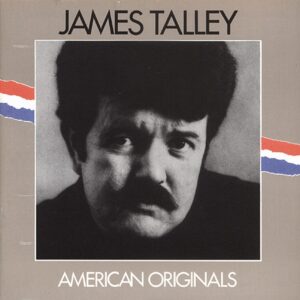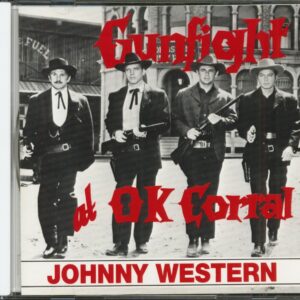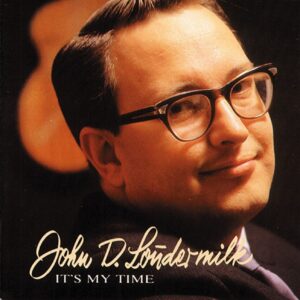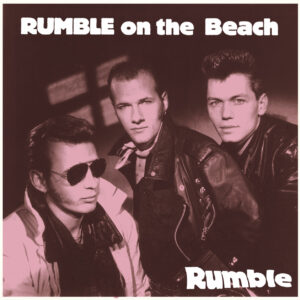€39.95
zzgl. Versand: 5.99EUR
Beschreibung
Deutschsprachige Ausgabe: BCD17227 3-CD Digipak mit 112-seitigem Booklet, 63 Einzeltitel. Gesamtspieldauer ca. 233 Minuten Along with folklorist Alan Lomax, Pete Seeger was a primary figure in seeding and shaping the American folk music revival. He never viewed himself as an entertainer, nor was …
https://www.awin1.com/pclick.php?p=23972383483&a=336463&m=14119
Deutschsprachige Ausgabe: BCD17227 3-CD Digipak mit 112-seitigem Booklet, 63 Einzeltitel. Gesamtspieldauer ca. 233 Minuten Along with folklorist Alan Lomax, Pete Seeger was a primary figure in seeding and shaping the American folk music revival. He never viewed himself as an entertainer, nor was he particularly comfortable as a solo performer. Yet his evangelical zeal for folk music and progressive social change inspired and nurtured three generations of singer-songwriters. Born May 3, 1919 in New York City, Pete Seeger was the third and youngest son of Charles and Constance Seeger, instructors at the New York Institute of Musical Art. The couple divorced when Peter was eight years old. In 1932 Charles married his student, Ruth Crawford, now hailed as a major 20th century composer. The couple had four children; of them, Mike and Peggy Seeger also became significant figures in American folk music. In summer 1936, Charles and Ruth took the 17-year-old Peter to the ‚Mountain Dance And Folk Festival‘ near Asheville, North Carolina. The youth was fascinated by the square dances and especially Bascom Lamar Lunsford’s and Samantha Bumgarner’s driving five-string banjo styles. Seeger spent the next five years perfecting his own banjo technique. After dropping out of Harvard University, Seeger became involved with folk music, labor organizing and politics. Alan Lomax encouraged the youth, hiring him to catalog race and old-time music recordings held by the Archive of American Folk Song in the Library of Congress. As Seeger’s confidence and musical skills grew, Lomax invited him to participate on his CBS radio show. In March 1940 Seeger met balladeer Woody Guthrie at a New York fundraiser for displaced migrant workers. In January 1941 Seeger, Lee Hays and Millard Lampell formed the Almanac Singers, performing folk songs and incisive topical songs at meetings, private functions, and labor rallies. Singing in natural, unaffected voices and driven by Seeger’s clawhammer banjo, the Almanacs fused the essence and excitement of rural Southern string bands with the passion of labor songs and the dry, clever wit of New York’s cabaret entertainers. This appealing music hybrid defined the sound and style of the American folk revival, and their records inspired a generation of young musicians. During the group’s brief existence, the Almanac Singers‘ revolving roster included Woody Guthrie, Brownie McGhee, Sonny Terry, Josh White, Bess Lomax Hawes and Agnes ‚Sis‘ Cunningham. While serving in the army during World War II, Seeger envisioned a national movement unifying songwriters, performers, choral leaders and labor unions into a force for political and social change. After returning to New York in fall 1945, Seeger formed People’s Songs. Initially drawing upon members of New York’s leftist folk, theatrical and literary scenes, the organization soon opened offices in Los Angeles, Chicago and Cleveland. Two years after its founding, 2,000 folk music enthusiasts attended People’s Songs‘ first national convention in New York. However, People’s Songs emerged as anti-Communist fervor grasped America. Many activists within the movement were or had been members of the American Communist Party. In 1948, People’s Songs embraced the third-party Presidential bid of former Vice-President Henry Wallace, who advocated co-operation with the Soviet Union. Members who mistrusted the Communists broke away from the movement, while those who remained – particularly Seeger – became easy targets for right-wing zealots. The Wallace campaign bankrupted People’s Songs. To pay off its debts, the remaining activists held a fund-raising hootenanny at a New York theater in late November 1948. To accompany a folk dance ensemble, Seeger recruited guitarist Fred Hellerman, his old Almanac Singers vocalist and song leader Lee Hays, and contralto Ronnie Gilbert. The quartet clicked musically and further rehearsals refined their sound. Although they had no long-range professional aspirations, the group performed at labor functions, political rallies and on Oscar Brand’s WNYC radio show, eventually adopting the name The Weavers. In December 1949 the group reluctantly accepted a week-long engagement at the Village Vanguard, a popular lower Manhattan cabaret. The response led owner Max Gordon to extend the booking through June. , Orchestra leader Gordon Jenkins caught the Weavers at the Vanguard and brokered a Decca recording contract. Their first record with Jenkins, Goodnight, Irene backed with Tzena, Tzena, Tzena, unexpectedly became 1950’s biggest hit. As their visibility rose, so did the ire of the watchdogs on the right. Harvey Matuso, a former People’s Songs vol…
EAN:5397102174032
GTIN:
Zusätzliche Informationen
| Versandpartner | |
|---|---|
| Künstler | |
| Künstler 2 |






